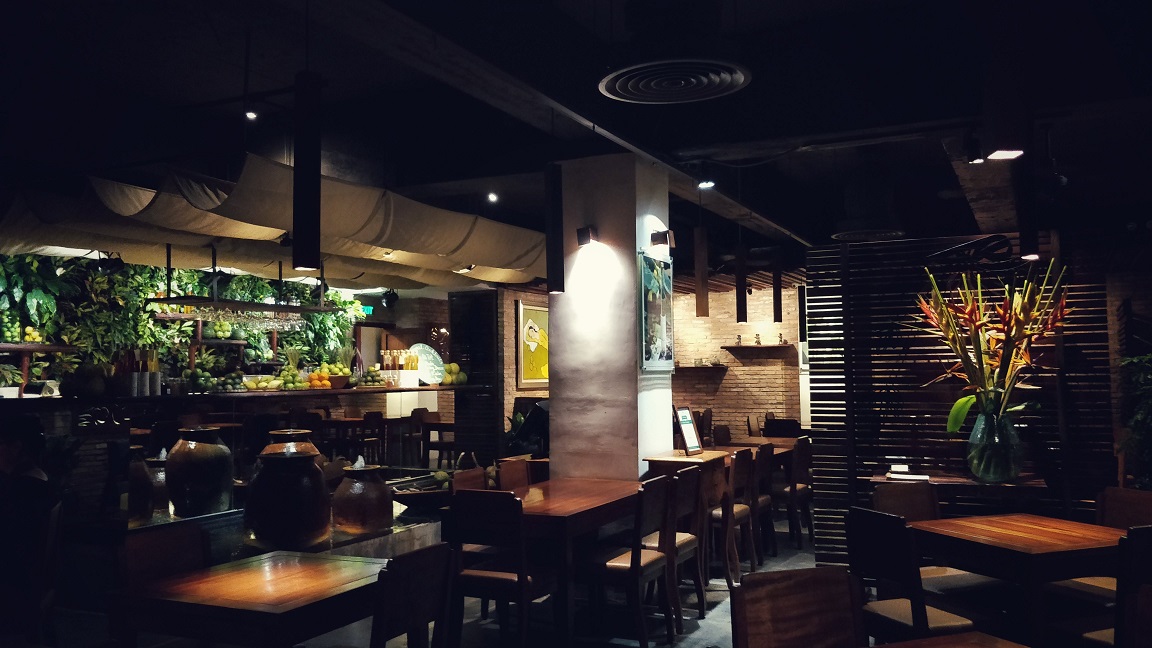Instagrammable Restaurants Islamabad: Picture-Perfect Dining Knowledge
Instagrammable Restaurants Islamabad: Picture-Perfect Dining Knowledge
Blog Article
Savor Authentic Asian Cuisine With a Pan-Asian Spin for a Culinary Adventure
Starting a cooking journey with authentic Asian food, enhanced with a Pan-Asian spin, offers an unique possibility to explore the abundant tapestry of tastes that define the region's varied culinary customs. This experience invites you to relish the charming equilibrium of tastes-- wonderful, salted, spicy, and sour-- balanced by fragrant natural herbs and flavors. Picture the cutting-edge fusion of Thai curry and ramen or the unanticipated pleasure of sushi burritos. As you ponder these enticing recipes, take into consideration the cultural stories and historical impacts that shape them, each bite using a tale waiting to be uncovered.

Discovering Pan-Asian Flavors
In the world of global gastronomy, Pan-Asian food stands out for its amazing variety and the unified interplay of flavors from numerous Eastern societies. This culinary method celebrates the rich traditions and one-of-a-kind ingredients found throughout the continent, producing a tapestry of tastes that is both intriguing and enjoyable. Secret to Pan-Asian cuisine is its capability to balance different flavors-- sweet, salted, spicy, and sour-- while highlighting the quality and high quality of each ingredient.
From the umami-rich soy sauce of Japan to the intense chili peppers of Thailand, Pan-Asian food uses a considerable combination of flavors. These aspects are frequently integrated in inventive ways, improving dishes with layers of intricacy. For example, making use of aromatic natural herbs such as lemongrass and cilantro, usual in Vietnamese and Thai cuisine, includes a rejuvenating illumination to meals, while the consolidation of coconut milk delivers a velvety, rich structure.
The emphasis on fresh produce and fragrant flavors makes certain that each dish is not only a feast for the taste but likewise for the detects. Pan-Asian cuisine invites restaurants to get started on a culinary trip, discovering the large and differed landscapes of Oriental gastronomy with every bite.
Combination Dishes to Attempt
While Pan-Asian food is celebrated for its standard flavors, the modern-day cooking landscape is progressively welcoming combination meals that blend these classic components with influences from various other regions. This innovative approach not just honors the rich heritage of Oriental cookeries but likewise presents novel taste experiences that appeal to modern tastes.
A prime instance of such a fusion recipe is the Korean-Mexican taco, where seasoned bulgogi beef is wrapped in a cozy tortilla, covered with kimchi and a spicy gochujang-infused salsa. This mix marries the vibrant, savory flavors of Korea with the dynamic, fresh aspects of Mexican food. Similarly, sushi burritos have actually obtained popularity, integrating the fragile artistry of Japanese sushi with the hearty, hand-held ease of a burrito, usually including blend ingredients like tempura shrimp and avocado with a drizzle of wasabi mayo.
Another noteworthy recipe is Thai curry ramen, which infuses the velvety, fragrant spices of Thai curry into the reassuring broth of conventional Japanese ramen, creating an unified mix that tantalizes the detects. These combination meals prolong beyond plain uniqueness; they represent a culinary discussion between cultures, encouraging exploration and technology in the world of Pan-Asian food.
Essential Active Ingredients and Seasonings
To absolutely appreciate Pan-Asian cuisine, one need to recognize the necessary ingredients and spices that develop its structure. This diverse culinary style draws from an abundant tapestry of Oriental customs, employing a harmonious mix of structures and tastes. Key components consist of soy sauce, fish sauce, and oyster sauce, which impart a mouthwatering umami deepness important to Asian meals. Corresponding to these are rice vinegar and mirin, lending a fragile level of acidity and sweet taste.
Aromatic components are critical, with lemongrass, ginger, and garlic being common throughout different Pan-Asian dishes. These ingredients provide a fragrant base that improves the intricacy of flavors. Flavors such as celebrity anise, cardamom, and cinnamon present warmth and character, resembling influences from regions like China and India.

Food Preparation Techniques and Tips
Understanding the art of Pan-Asian food calls for familiarity with its distinctive cooking techniques, each contributing to the lively tapestry of flavors this culinary practice is commemorated for. Central to these methods is the stir-fry, a quick food preparation strategy that maintains the nutritional stability and vibrant colors of active ingredients. Making use of a frying pan, the stir-fry method enables also warm distribution, important for attaining the particular structure and flavor balance of Pan-Asian dishes.
Another fundamental technique is steaming, especially prevalent in Chinese cuisine. This mild method keeps the all-natural flavors and nutrients of ingredients, making it excellent for fish and shellfish and veggies. Dumplings, a beloved staple, often gain from steaming, leading to soft, succulent appearances.
Cooking, also indispensable, presents great smoky depths to dishes such as Korean bulgogi or Japanese yakitori (Chinese food Islamabad). This strategy frequently involves marinading active ingredients, enabling tastes to pass through deeply prior to cooking over an open flame or warmer
Lastly, understanding the art of stabilizing flavors-- pleasant, sour, salty, bitter, and umami-- is essential. Appropriately layering these elements can raise a dish from ordinary to extraordinary, using a&w near me a complicated and pleasing culinary experience that embodies the significance of Pan-Asian food.
Eating Experiences Worldwide
Across the world, Pan-Asian cuisine uses an unequaled important source eating experience, celebrated for its rich tapestry of tastes and dynamic discussions. This cooking sensation has transcended social limits, catching the hearts and palates of food fanatics worldwide. In worldwide cities fresh York, London, and Sydney, Pan-Asian restaurants act as fusions where culinary customs from Thailand, Japan, China, and beyond assemble, supplying diners with an eclectic mix of dishes that highlight the region's diversity.
The international allure of Pan-Asian food hinges on its capability to supply both authenticity and development. Cooks skillfully marry typical active ingredients such as lemongrass, soy sauce, and miso with modern strategies, leading to recipes that are both acquainted and refreshingly new. This fusion allows diners to start a culinary journey that values heritage while embracing modernity.
Moreover, eating experiences are elevated via attentively developed settings that show the values of Pan-Asian aesthetics. From minimalist Japanese-inspired interiors to vibrant Thai-themed rooms, each dining establishment provides an one-of-a-kind setting that matches the culinary offerings. As an outcome, patrons are not just taking in a meal but partaking in a cultural experience, making Pan-Asian eating a really international phenomenon.
Verdict
The exploration of Pan-Asian cuisine supplies an extensive understanding of the intricate interaction of flavors and cooking customs across Asia. By welcoming fusion dishes such as Thai curry ramen and sushi burritos, the culinary here are the findings journey not just highlights the flexibility of typical ingredients but also showcases ingenious contemporary techniques. This gastronomic experience, enriched by vital seasonings and cooking methods, offers a special chance to value the multiculturalism and culinary artistry that define Pan-Asian food on a worldwide scale.
Getting started on a culinary trip through authentic Oriental food, enhanced with a Pan-Asian spin, offers an unique opportunity to explore the rich tapestry of tastes that specify the region's diverse cooking traditions.In the world of international gastronomy, Pan-Asian food stands out for its remarkable variety and the unified interaction of tastes from various Oriental cultures. Key to Pan-Asian food is its capacity to balance different tastes-- sweet, salty, spicy, and sour-- while highlighting the quality and high quality of each component.

Report this page